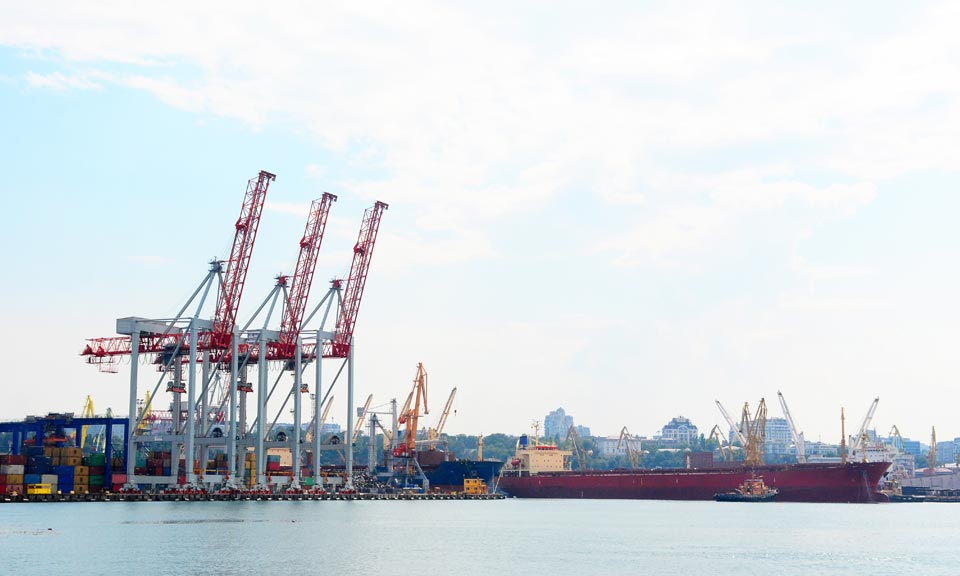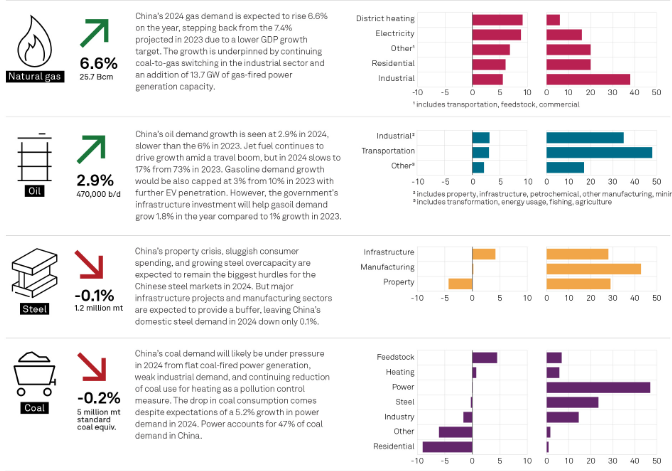Black Sea Watch: Weekly Ukrainian seaborne grain flows ease back to August lows

Downward pressure in seaborne Ukrainian grain flows through the Black Sea persisted during the week Jan. 9-15, with volumes declining 20% on the week to reach 490,825 mt, the lowest weekly level since mid-August, an analysis of UN's Black Sea Grain Initiative Joint Coordination Centre data by S&P Global Commodity Insights showed Jan. 16.
"Usually, grain exports come back by the end of January, beginning February," said a chartering broker pointing to the typical period when new contracts are signed, noting, however, that regional players don't expect a significant improvement in grain flows or tonnage requirements due to the damage inflicted by the Russia-Ukraine war.
In recent fixtures, Leda C, 2011 built, 81,526 dwt, was heard fixed to open Port Said Jan. 24 via Ukraine, redelivery Far East at $16,250/day or at $17,000/day and a $550,000 ballast bonus.
The UN-brokered Black Sea Grain Initiative, signed last July by Russia, Ukraine and Turkey and renewed in November for another four months starting Nov. 19, enabled the resumption of exports of grains and other foodstuffs from the three key Ukrainian ports of Chornomorsk, Odesa and Yuzhny/Pivdennyi on the Black Sea, with cumulative grain shipments under the safe passage deal reaching over 17.4 million mt as of Jan. 15, according to JCC data.
According to the JCC, the number of inspection teams remains at three, with plans to conduct nine inspections on Jan. 16, four on inbound vessels and five on outbound vessels.
"Currently, 30 vessels are waiting for inspection: eight of them waiting to move into Ukrainian ports and 22 loaded with cargo waiting to sail to their global destinations. Seventy-nine applications for participation in the Initiative have been submitted," the JCC said Jan. 15.
In addition to the lower volumes observed recently, the average cargo size during the period Jan. 9-15 shrunk 32% on the week to reach 25,833 mt, returning to mid-December levels, JCC data showed.
The largest cargo observed during the week Jan. 9-15 was a 70,799 mt shipment of corn headed to China aboard the 83,007 mt dwt, 2006-built Cuma, which departed from the terminals of Yuzhny/Pivdennyi Jan. 13.
The share of corn shipments eased to 43% of the total weekly flows during the period Jan. 9-15, in contrast to over 60% the previous week, remaining nevertheless the top grain type exported in terms of volumes, with wheat accounting for less than 20% and sunflower products almost 19%, data from the JCC showed.
Barley and soya beans accounted for the rest.
According to the JCC data for Jan. 9-15, Europe and Central Asia attracted over 48% of the grain volumes, with 27% of flows destined for East Asia and the Pacific and another 19% on its way to Middle East and North Africa.
The remaining volumes were shipped to South Asia among other destinations, JCC data showed.
In terms of income, the share of high-income destinations more than doubled on the week to reach above 32% of total grain volumes, according to JCC, with 3% of flows headed to low-income regions, and the majority of the remaining cargoes destined for middle income countries during the week Jan. 9-15.
According to data from S&P Global Commodities at Sea, Ukrainian grain exports from the three key ports included in the Black Sea Grain Initiative continue to lag their pre-war levels in January, averaging close to 82,000 mt/day for the period Jan. 1-14, some 19% below their five-year January average for the period 2018-22, and almost 37% lower than the average daily levels observed during January 2022.
In addition, the age of the vessels operating in the trade has increased significantly, reaching over 17 years during the first half of January 2023, compared with an average age of about 11 years for vessels trading in those ports during the same period over the past five years.
Globally, dry bulk freight rates have been suffering on the back of persistent macroeconomic uncertainty and poor expectations for Q1 2023, with the Platts KMAX 9 Index, a weighted average of spot time charter equivalent rates on key Kamsarmax routes across the globe assessed by Platts, last standing at $7,451/d on Jan. 13, having slipped below $10,000/day earlier on Jan. 6 for the first time since November 2020, now trending 62% lower than the $19,684/d average for 2022.
Platts is part of S&P Global Commodity Insights

News
Russia, one of the world’s largest oil suppliers, has increasingly turned to non-Western firms to transport its crude to overseas buyers during its ongoing war with Ukraine . With a dual goal of undermining Russia’s war chest without creating significant disruptions to global supplies amid inflation pressure, G7 countries and their allies have banned tanker operators, insurers and other services firms from facilitating seaborne Russian crude exports unless the barrels are sold for no more than $60/b. The price cap regime, which came into force Dec. 5, 2022, does not directly cover tankers flagged, owned and operated by companies outside the G7, the EU, Australia, Switzerland and Norway, and not insured by Western protection and indemnity clubs. While such ships tend to be older and less maintained, their share in Russia’s crude exports market has been rising in recent months amid strengthening prices of Urals -- the OPEC+ member’s flagship crude grade -- and tightening sanctions enforcement by the West. Non-price-capped tankers have a larger market share in shipping Russia’s Pacific crude exports, according to analysis of S&P Global Commodities at Sea and Maritime Intelligence Risk Suite data. Crudes such as Sokol, Sakhalin Blend, and Eastern Siberia–Pacific Ocean grades are more often involved in these trades than Russian barrels from Baltic or Black Sea ports like Urals. Tanker operators in Greece, Europe’s top shipowning nation, managed to keep their traditionally strong market position in Russia in the first few months since the price cap took effect before giving ways to their peers in the UAE, Russia, China and Hong Kong. (Latest update: April 5, 2024)

News
Red Sea shipping volumes have slumped more than 60% since November as vessels opt for the longer Cape route to avoid Houthi attacks. But even as the severity of the attacks mounts, freight rates have retreated from recent highs and oil-on-water may have peaked as trade flows adjust. Click to see the full-size infographic

News
A series of attacks on shipping routes in the Red Sea has so far spared oil supplies from witnessing major disruptions, but oil importing countries are spending sleepless nights amid concerns that any escalation could potentially alter the situation drastically. Although the attacks disrupted container shipping lines, oil shipments remain largely stable. However, concerns stem from the fact that supply chains will likely have to adjust very quickly should the disruption persist. As existing oil tanker contracts are often hard to change, some ongoing traffic will continue to move through Red Sea passages. Any new insurance issued for Red Sea routes could add about $1/b or more to voyage costs, according to S&P Global Commodity Insights. Re-routing will increase voyage length, in-transit times and fuel costs. In addition, it will result in higher vessel utilizations, which could lift global freight rates as well as widen inter-regional crude spreads. Surely, more ships are avoiding the Red Sea and Bab al-Mandab strait after a spate of attacks by Yemen's Houthi militants, threatening the strategic chokepoint for global seaborne trade. Many shippers, tanker owners and some oil companies have suspended voyages through the area. Russia's oil exports are particularly exposed to further Red Sea disruptions as Moscow ships some 80% of its crude to Asian markets. The attacks are expected to keep insurance costs high and prompt many tankers to take the longer route via the Cape of Good Hope, increasing ton miles and voyage durations, as well as tightening supplies and driving up freight rates. Even for the route via the Suez Canal, higher fees effective this year combined with a carbon tax for Europe-bound cargoes, will increase overall costs for charterers. Special report: Taking the long way around: Ships divert from the Panama Canal Although the rerouting of tankers away from the Red Sea, a major conduit for oil loaded in Russia, will surely raise shipping costs, the impact will be transitory. Roughly 7 million-8 million b/d of crude oil and products transited the Red Sea in recent months, according to S&P Global data. The market, for sure, will adjust to the changing flows, but the re-routing will lead to more oil on the water for a longer period of time. Russian crude shipments, should they avoid the Red Sea, are most affected due to a much longer haul to Asia around Africa. And amid tighter fleet capacity, lingering geopolitical conflicts are expected to boost tanker freight in 2024 despite ongoing OPEC+ supply cuts and a possible slowdown in oil demand growth. Implications for Asia As the biggest oil importing region, Asia may not witness dramatic changes to near-term oil supplies amid the ongoing Red Sea crisis, but refiners are chalking out alternative plans to ensure steady feedstock flows in the event of an escalation, a move that could inflate insurance costs and crimp refining margins. Although the region relies on imported oil for the bulk of its needs, the strategic push among Asia's top importers to massively diversify their import baskets over the years, as well as expand strategic storage, will come in handy to ensure smooth and uninterrupted flow of feedstocks. The Red Sea crisis has three aspects to it, as far as Asian oil flows are concerned. First, any escalation will create hurdles for Russian crude flowing to Asia, forcing buyers to look for substitutes from other origins. Secondly, for products moving from Asia to Europe, exporters are cautiously watching developments before taking the plunge. And lastly, longer routes have the potential to create incremental bunker fuel demand in Asia. Oil flows into China have not been impacted much by the Red Sea turbulence, as fewer cargoes are headed there on that route. In addition, the impact on Russian oil flows to India has been minimal, with no major diversions seen so far. Russia contributed over 35% of India's total crude imports in 2023, amounting to 1.7 million b/d, according to S&P Global data. Asian oil buyers are not necessarily concerned about Middle Eastern sour crude supplies for 2024, as major sellers, including Saudi Aramco and Abu Dhabi National Oil Co., fully respect Asian customers' demand regardless of their production cut commitments. However, the economics for cracking Middle Eastern sour crude have been deteriorating as the costs of bringing Persian Gulf barrels to the Far East have been rising with shippers demanding risk premiums, while tanker insurance costs are also trending higher. Asian refiners may even look at cutting Middle Eastern term contractual volumes and explore other options like African, US and South American crudes to maximize margins. US crudes, for one, is becoming increasingly more attractive for Asian refiners as the price of lighter and sweeter WTI crude is nearly on par with high-sulfur Persian Gulf grades on a delivered basis. Supply cushion The attacks in the Red Sea continued even after the US-led alliance took military action to establish deterrence. The risk of a wider escalation also increased with Pakistan's retaliatory strikes against Iran for alleged Iranian militant attacks in Pakistan. Overall, the geopolitical tensions in the Middle East have only increased over the weeks. However, oil markets have largely shrugged aside the risk due to a lack of physical disruption to oil shipments and weak macro fundamentals. But increased risk in the Middle East is probably putting a floor to oil prices amid weak demand. S&P Global expects fundamentals to improve in the second half of 2024 and prices to move up. Still, OPEC+ market management and the alignment between Saudi Arabia and Russia on OPEC+ policy will be critical for oil markets in 2024. S&P Global forecasts Platts Dated Brent to average $83/b in 2024 and $76/b in 2025. A sharper economic slowdown or disagreement within OPEC+ on production restrain remains the biggest risk for oil markets going into 2024. By: Sambit Mohanty, Editorial Lead, Asia Energy News, S&P Global Commodity Insights, S & P Global Commodity Insights Further reading: Red Sea shipping risk

News
China on Jan. 17 released its 2023 GDP growth at 5.2%, meeting its target set in March last year. S&P Global projects China’s 2024 GDP growth to slow to 4.7% after the country's annual economic conference held in December implied that any fiscal and monetary measures taken in 2024 were unlikely to be more aggressive than in 2023. This sets a weak tone for commodity markets in terms of end-user demand. Click here to see the full size version